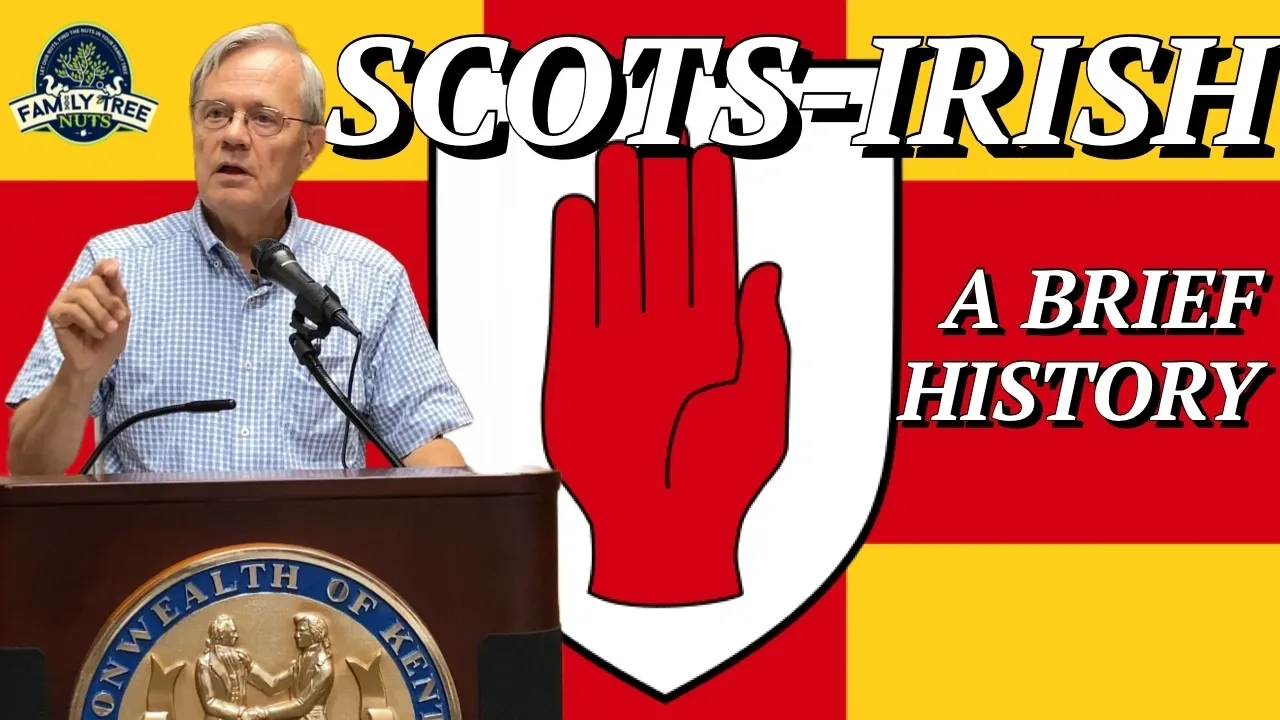
THE SCOTS-IRISH, A BRIEF HISTORY, BY JUDGE JOHN DAVID PRESTON
The Scots-Irish are a unique group of people that have their roots in Lowland Scotland, who emigrated to Northern Ireland, often mixing with the native Irish, and then around a quarter million of them emigrated to the United States, usually to the back country of Appalachia. This article is a transcript of a lecture given by Judge John David Preston to the 2022 Jenny Wiley Descendants Gathering. Jenny Wiley is a renowned pioneer heroine with an epic story. For the sake of the audience, the lecture has an emphasis on Jenny’s husband Thomas Wiley, and her father Hezekiah Sellards, but mostly covers the history of the Scots-Irish in general. In order to preserve the true meaning of the speaker, this article reads as Judge Preston speaks and is not always grammatically correct. At the end of this article you will find a link to a video of this lecture that includes many pictures and maps that help to understand the story better. Now onto Judge Preston’s lecture about the Scots-Irish…
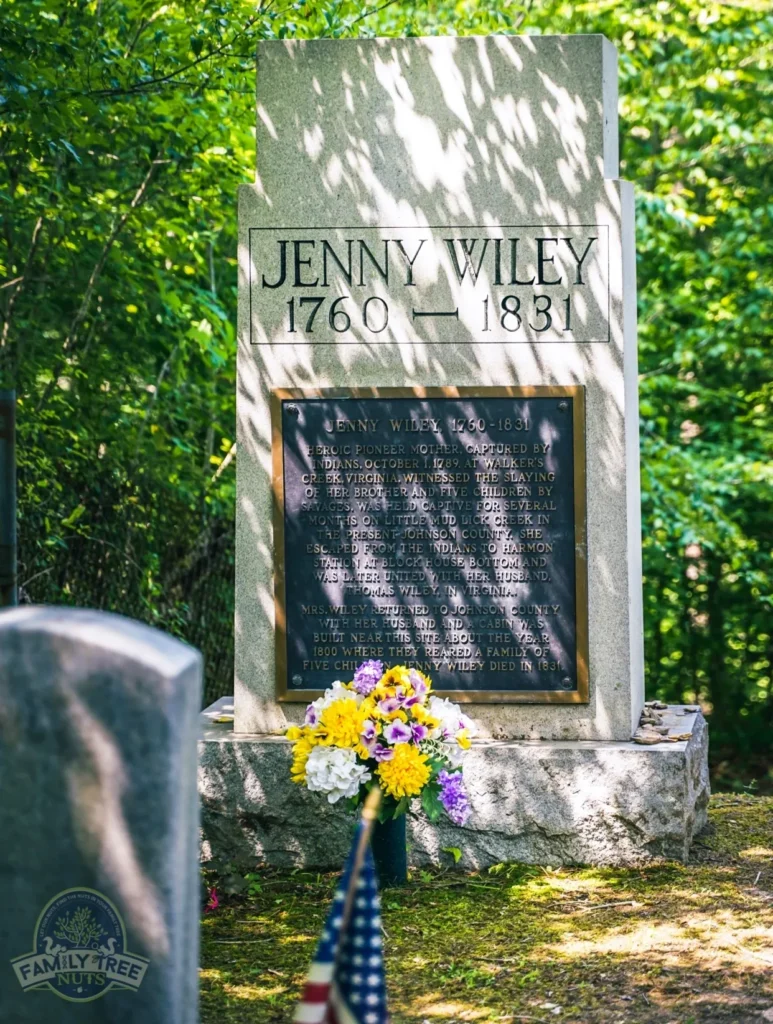
What do we know about Hezekiah Sellards and Jenny Wiley? We know that Hezekiah was the father of Jean “Jenny” Sellards Wiley, and Thomas was her husband. The short answer to the question is not much. So, let’s review what we do know about Hezekiah Sellards, most of what we know is contained in Clayton Cox’s book, “Descendants of Hezekiah Sellards”, which is the book that its title tells you everything about it. It’s the descendants of Hezekiah Sellards. He says that Hezekiah migrated from Scotland to Ulster. Ulster is the six counties of Northern Ireland. He says he migrated to America in 1732 because of religious persecution in Northern Ireland, that he was a staunch Presbyterian and lay leader of the church. We don’t know who his wife or wives were. We don’t know where he is buried. No marriage license has ever been located. We know that he settled first in Philadelphia, then moved down the Shenandoah Valley, and ended up on Walker’s Creek, Bland County, Southwest Virginia about 1760. But what do we know about his background beyond that?
Then there’s Thomas Wiley. We know a little bit more about him. Much of which comes from William Elsey Connelley’s book, “The Founding of Harman’s Station with an Account of the Indian Captivity of Mrs. Jennie Wiley and the Exploration and Settlement of the Big Sandy Valley in Virginia and Kentucky”. We know that he was an Irish immigrant. William Elsey Connelley, says that he was recently arrived in 1777 from the north of Ireland but other sources say he was here as early 1760. Clayton Cox says Hezekiah Sellards was opposed to the marriage of Jenny and Thomas Wiley. And he suggests that it may have been because of “opening of old wounds of Scots-Irish conflicts of old Ireland”. That suggests to me that he is suggesting, or thinking that the reason Hezekiah Sellards opposed the marriage to Thomas Wiley, was that Thomas Wiley was a Roman Catholic, because of the conflicts in Ireland.
We know he was born about 1756, that he fought at the Battle of Point Pleasant in 1774, served in the Robertson Virginia militia, the Captain Lowe militia, and in the Virginia line in 1778. He fought at the Battle of Monmouth New Jersey in June of 1779. He married Jenny, they moved to Kentucky. He died around 1810. He was buried in what is now Johnson County, Kentucky. What else do we know about his background? Again, the short answer, not very much. But I think if we have a little bit of a history lesson, perhaps we can learn just a little bit more about these two men’s backgrounds that will let us know some things about them.
So, let’s turn on the way back machine some of you saw on TV many years ago. I’m seeing some blank faces and I’m seeing some smiles and that tells me whether you recognize that or not.
We think we believe, they are called Scots-Irish. Okay, there are lots of Scots-Irish in this country. I checked my ancestry and I’ve got five different lines in my family that are called Scots-Irish. But we are the only people that say Scots-Irish. In England, in Scotland, in Ireland, they call the same people Ulster Scots, because they lived in the six counties of Northern Ireland that compose Ulster. They do not say Scots-Irish because that implies a connection between the Scots and the Irish, or Scottish and Irish and we will determine as we go on, that didn’t happen. But for our purposes, we’ll say Scots-Irish.
We’ve got to go back in time to 1603 when King James VI of Scotland upon the death of Queen Elizabeth I, became King James I of England. You may recall that name because the King James Version of the Bible was written at his request. He didn’t write it, but he saw that it was written. Of course, there have been many versions of the Bible written over the years, the Revised Standard Version and so forth and so on. But many people still prefer the King James Version. And the story goes this way, some fella will say, “Well, if the King James Version was good enough for Jesus, it’s good enough for me”. Folks, I defy you to argue with that logic.
The English had been in conflict with the Irish for centuries. Around 1100 AD, King Henry II and Anglo-Norman English King invaded Ireland because he thought it would be a good place to take over. Not surprisingly, the Irish had a different view of that and did not appreciate the intentions the English were favoring them with, and that set-in place a conflict that lasted off and on until 1921 (1922) when the Irish gained their independence. In Ulster, Northern Ireland, the conflict continued even longer, until the peace agreement of 1998 was signed. Now that is just a hair less than 800 years, 900 years, a very long period of time. So, there was a great deal of conflict. But our story takes us to about 1595 when two Irish Lords named Tyrone and Tyrconnell launched a rebellion against the crown of England. It went on until 1603 and was not settled with the defeat of the Irish until just about the time that Queen Elizabeth I died. It ended with the defeat of the Irish and a great deal of depopulation of Ireland, probably as result of conflict and also poor crops, starvation and so forth.
So, James I was actually a very shrewd administrator; he knew that there was a problem in Ireland and his plan was to populate Northern Ireland with Scottish Presbyterians and simply outnumber the Catholics in Northern Ireland. About 1606 they started coming across the water from Scotland to Northern Ireland. At its closest point, they’re only 20 miles apart, so it wasn’t a great voyage. By 1608 the lands of Tyrconnell and Tyrone escheated to the crown of England. They had engaged in treason, and when you engaged in treason against the crown of England, number one, they executed you. These fellows weren’t executed because they left, and never came back. And the lands that you had were forfeited to the Crown. The king took your land. Do you think that Queen Elizabeth II who owns all these vast estates bought them? Oh no. Over a period of time, various people in England have been found guilty of treason and their property was forfeited to the crown. And that’s the reason that the Queen has these vast estates.
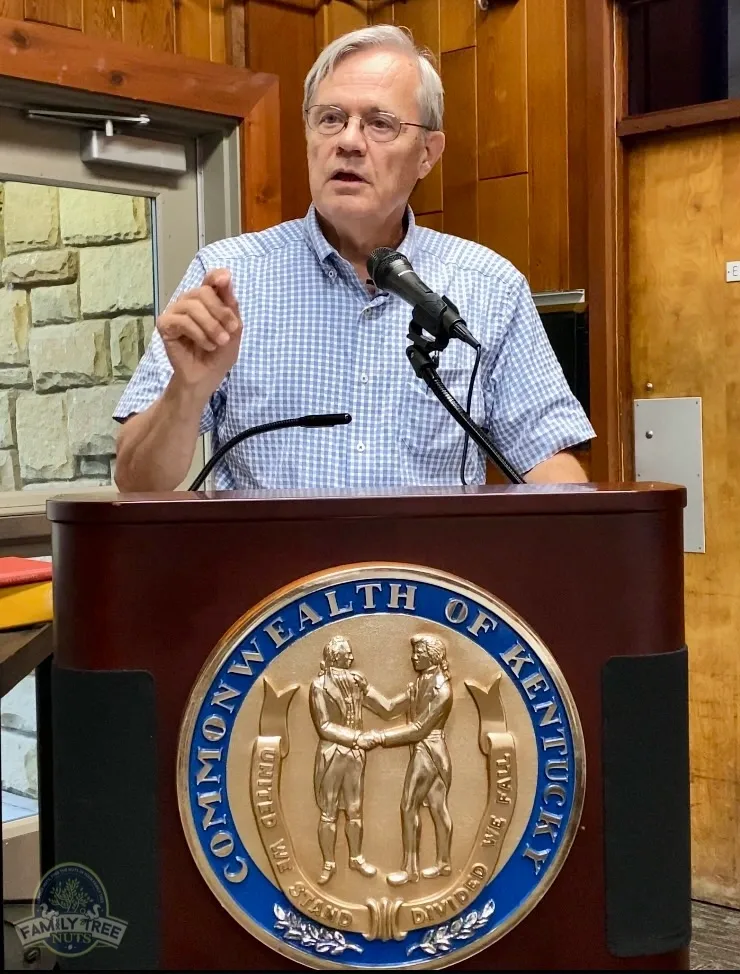
Well, anyway, Tyrone and Tyrconnell had about 500,000 acres in Northern Ireland, and it all fell to the king. The king distributed it to his friends, various business groups in London, various Scottish nobles, not to the common people, now you must understand, to the very wealthy and well connected. These folks began to convince Scottish folks to come across and to become farmers on their land.
I should point out that nearly everyone who came across under these circumstances was a tenant farmer in Scotland. You need to understand that that was basically what everybody was. There were a few people who owned enormous tracts of land. And they leased them out to tenants who farmed the land and raised the crops and paid a certain rent per year. But the tenant farmers did not own the land. They would never own the land and when they came to Northern Ireland, they did not own the land but they rented or leased it from the king’s friends.
They came because the land in Northern Ireland was so much more fertile than the land in Scotland. Scotland was actually a very backward place. They had very poor agricultural techniques. The soil was very poor and meager and moving to Northern Ireland was a great economic advance for these folks. They started coming literally by boatload. That’s how you got there, by boat. By 1620, 50,000 settlers, by 1640, 100,000 settlers crossed the water. By 1650 Protestants, the Presbyterians, were the numerical majority in the six counties in Northern Ireland. But no, it was not great in Northern Ireland. There were various problems that occurred.
There was periodic persecution by the Church of England, the Anglican Church. You need to remember that in those times, the way religion worked was, whatever faith or religion the king was, the king expected everybody else to be of that faith. And if you wanted to be of another faith, you were taking a great risk. So, the king required in 1639, what was called the Black Oath that required the Ulsterman to swear that they would not support any religious uprising that was taking place in Scotland. The Scottish Presbyterians had issues with the Church of England, and there was a great deal of discord. Many of those refused. Many of those who refused came to this country at a later date. And there were persistent problems with the Irish Catholics. They lost a rebellion, the Catholics did, around 1640. It took a long time for the English to get around to dealing with that because they had the English Civil War that ultimately resulted in the execution of King Charles I, the successor of James. Then finally about 1650 Oliver Cromwell came across the Irish Sea and put down the rebellion, which took about three years. And when I say took down the rebellion or put it down, I mean that seriously. As a result of the fighting, famine, persecution during the period of time of the putting-down of the revolt, the population of Ireland was 1.4 million when Cromwell arrived, and by the time he had finished his work 600,000 had died. That’s three-eighths. These two tables have eight people, I’m sorry nine people. Under that theory, three are gone.
So, it was an enormous toll on the population. The Scots-Irish, Ulster Scots made a good show of it in Northern Ireland. They learned and they used good agricultural techniques. They drained the swamps. They got into wool, they got into linen. Some people came from the Netherlands and brought the flax industry in, they were doing quite well. So well that the people in Parliament in London sometimes got a little jealous and they passed laws that damaged the folks in Northern Ireland. For example, in 1663 they passed a law that Irish ships were prevented from transporting goods to any part of the British Empire. Why’d they do that? So the English ships would transport the goods to the other parts. In 1698 they passed what was called the Woolens Act, which prohibited the export of Irish wool, which is quite good wool, except to England and Wales, they couldn’t send it to France, they couldn’t send it to Holland, they couldn’t send it to Sweden. So, they were punished by that.
Later there was a reign of James II in 1685, who was Catholic, and he again began to persecute the Ulster Scots. That ended in 1690, in what was known as the Glorious Revolution, when William and Mary of Orange came from the Netherlands and defeated James II in June 1690, at what is called the Battle of the Boyne. That is still celebrated today by the Protestants in Northern Ireland. They have little orange buttons that they wear, and you can see that, but that broke the Catholic power.
That brings us to the migration from Northern Ireland to the United States. It started in the 1700s and there were five periods of migration, 1717, 1725, 1740, 1754 and in 1771. Migration ended completely in 1775 and the American Revolution started and all the migration stopped. The first people to migrate were the Presbyterian ministers because of their religious persecution but most of the time, the migration was
because of difficult economic circumstances in Northern Ireland. In 1703, Queen Anne had passed by Parliament what is called the Test Act. That required all officers of whatever kind in Ulster, to take an oath, and take the sacraments of the Anglican Church. Well, the Presbyterians would not do that. They simply would not do that. That act was far reaching. It meant that a marriage done by Presbyterian minister might be void. It also meant that a Presbyterian minister cannot bury someone who is dead without using the Anglican sacrament and this created a great deal of discord and persuaded a lot of people to leave. In 1717 there was a four-year drought that caused a lot of people to come and there was also a process called rent racking. As I said these people were tenants, they rented the property from the landlords that usually lived in England. The leases were very long: thirty-one years, that’s a long lease but by this time, a lot of these leases were coming due, and the landlords wanted a lot more money. Well, you can understand that you can’t really blame them but many of the tenants in Northern Ireland could not pay the rent. They had nothing else to do, so they began to migrate.
The migration was enormous. It’s estimated that at least 250,000 Ulster Scots migrated to this country during the 1700s. Most of them came to Philadelphia, that was the biggest port of entry in this country. Scots-Irish were welcomed there, they were quite frankly not welcomed in other places. They were not welcomed in New England, Coastal Virginia, New York, South Carolina, or North Carolina, because they had a reputation that they were a little bit rough. But they were welcomed in Pennsylvania and other places because they were rough, because they provided a buffer against the Indians. Pennsylvania was run by Quakers and the Quakers were pacifists, they wouldn’t fight, but they put the Scots-Irish out there on the frontier and the Scots-Irish had no qualms about taking up the cause against the Indians, so it worked out pretty well for them.
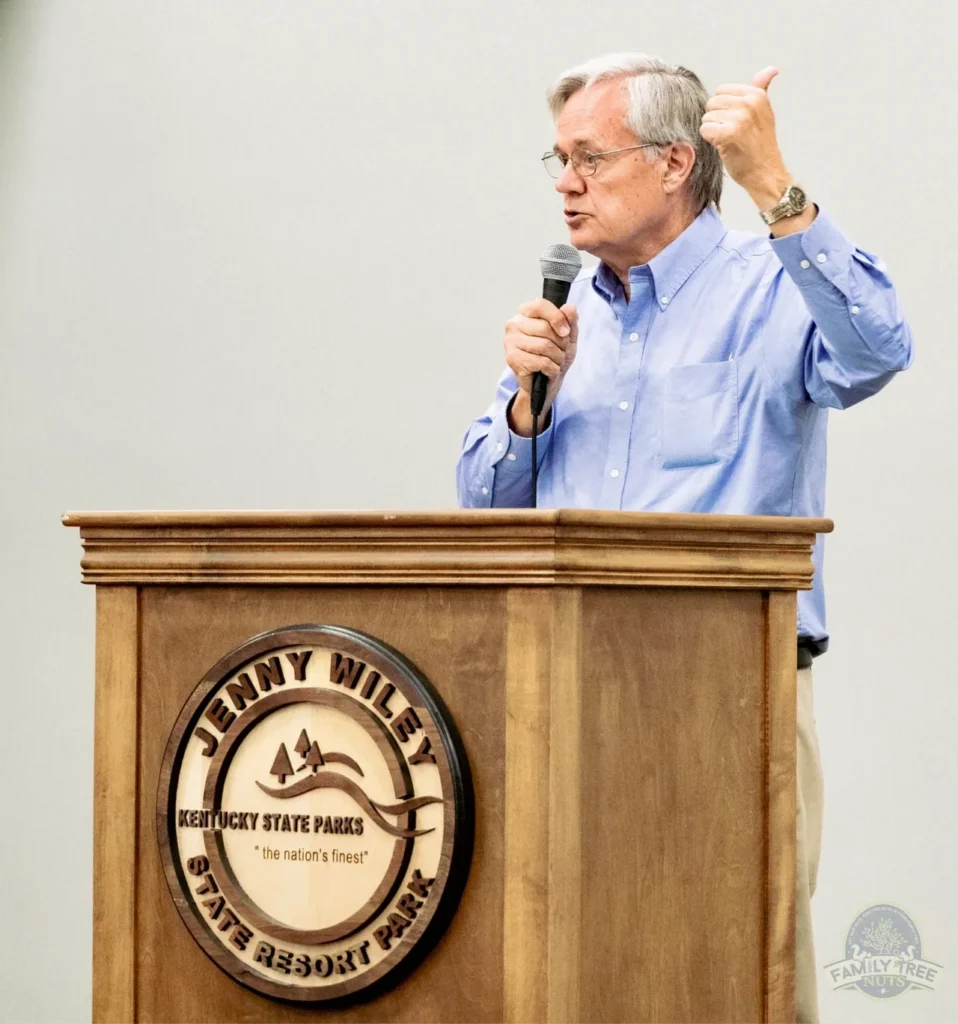
They came to this country as indentured servants; 75% were indentured servants. And you may say, well, that’s a sign of, you know, a bad sign, but not really, because they had to pay for a passage to this country. They signed a contract and they worked for a period of time for the person that paid their passage to come to this country, and then they were on their own. There are instances of folks coming from Northern Ireland to this country who had the money to pay passage, but they came as indentured servants instead because they did not know what was really on the other side of the ocean. They came over here to learn the people, to learn the trade, to see what kind of crops could be raised to learn how to raise them, and they did that under the supervision of the person who paved their way over here for a period of time, and once they had done that, they had served kind of an apprentice and they knew how to do it.
After they came to Pennsylvania, Pennsylvania got pretty full. They headed down the Shenandoah Valley along what is now Interstate 81, in Virginia, going to Southwestern Virginia. They made their way to the Piedmont of North Carolina and South Carolina. They were not welcomed in the coastal areas of North and South Carolina because they were the Scots-Irish, but they were welcomed in the Piedmont because again, they furnished a buffer against Indians. They migrated to this country because it presented to them economic opportunities that were unavailable to them in Ulster and the opportunity that was available to them was the ability and the chance to own land. We take that for granted. I had lunch with a fellow today that is buying a house. He’s 91 years old. I said Dave, what are you going do, take out a 30-year mortgage? He laughed and said, yeah, maybe I will. We take the ability to buy and own land for granted. These people did not because it was not available to them.
The land in Ireland was owned by great absentee landowners. The land in England was owned by the great lords who owned 1000s and 1000s and 1000s of acres of land. The land in Scotland was owned by the great barons who owned 1000s of acres of land and the land was tied up. They had a system called primogeniture, which says basically all the land goes to the oldest son. Now they passed some laws that require the oldest son to make some compensation to the other children, but the reason they did that was to keep the estate in the family and keep it intact, so this 50,000-acre tract of land is going to stay in the same family from now until forever. And even today, the land that is England, in Scotland, Ireland is still vastly owned by these great landowners. So, the average person who comes across the channel, from Scotland to Northern Ireland, does not own the land in Scotland, he is a tenant. He comes to Northern Ireland, he is a tenant, he leases the land. He knows he is not going to own the land now or forever. But he comes to America and he understands that he has the chance to own land in America. And you need to remember the size and scope of things. The entire British Isles are about the size of the state of Georgia. And that’s it, all the rest of this continent was so vast that people cannot imagine that there are any boundaries to it.
So, what does this tell us about Hezekiah Sellards and Thomas Wiley? About three things: One, Thomas Wiley, he was not a Catholic. How do I know that? Well, for one thing he came from Northern Ireland. Northern Ireland was two-thirds Presbyterian. Okay, that’s a good start, but that leaves the other third. How do I know he was not a Catholic? Because he migrated in the 1700s. There was essentially no migration whatsoever by Roman Catholics from Ireland to the United States until at least 1840, when the potato famine hit Ireland and a million people starved to death. So, we can assume, we don’t know within 100% of certainty but we can be almost absolutely certain that he was not a Catholic.
What do we know about Hezekiah Sellards? Well, I would say that everybody in this room is a descendant of Hezekiah Sellards, or married to one. My question is, which of you, or who of you know who it was, that inherited Hezekiah Sellards kilt, his bagpipes, and his tartan? I don’t, I didn’t inherit it. Nobody in my family did, do any of you know? (Someone in the crowd jokingly said: Mary Perry-Sword inherited Hezekiah’s bagpipes) She’s got the bagpipes? Mary has fake bagpipes. How do I know this? I’ll tell you, look at your map. It shows you Scotland. The light area is called Lowland Scotland. The shaded areas are Highland Scotland. There is a vast difference between the two.
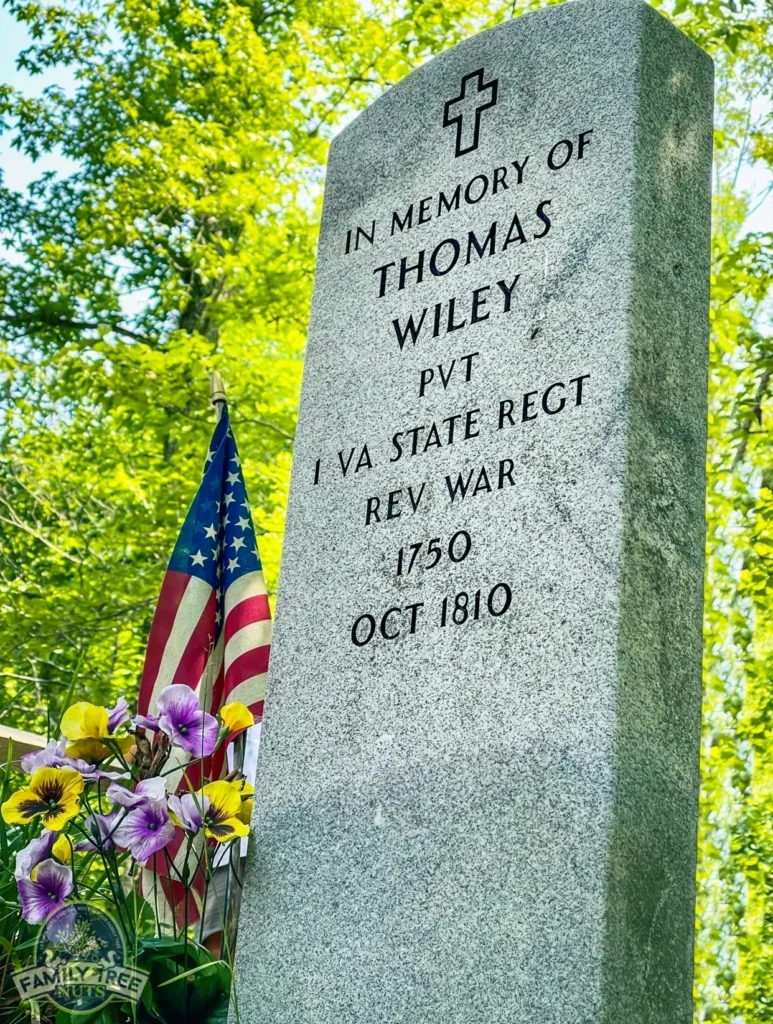
I took a plane a few years ago from Edinburgh to Glasgow. You can literally see out the plane window where the Lowlands stop and the Highlands start. I mean, it’s just stark, it’s not just a gradual change. I mean, its, boom, boom, just like that; immediate change. And you say what difference does that make? I’ll tell you. We think of kilts, bagpipes and so forth as being associated with Scotland. You can go on YouTube, and you can see the bands coming down the streets playing the bagpipes and playing these tunes anywhere you want in Scotland, but the fact of the matter is that those factors, those items, bagpipes, kilts, tartans were confined to the Highlands. They were not associated with the Lowlands. There is a great difference between the Highlands and the Lowlands. They don’t really like each other. And you say okay, that’s fine, but how does that prove your point?
King James I had his Irish problem and the way he solved his Irish problem was to make sure that only good Scottish Protestant Presbyterians came to Ulster. He specifically excluded Highland Scots from coming by order of the King. Why? Because there was a great deal of residual Catholicism in the Highlands, and he could not take a chance of allowing Highland people who might be Catholic to go to Northern Ireland when his entire purpose was to populate the country with Protestants. So, Hezekiah Sellards was not a Highlander, he was a Lowlander. Hezekiah Sellards did not have bagpipes, did not wear a kilt, did not have a tartan. He was just like all the rest of us. You may have wondered, how come none of us ever had a bagpipe stashed away in the attic? The reason is, as much as we might like to romanticize and say, yeah, gee, really, it’s great to have a bagpipe, but it’s not in our heritage, it’s not in our DNA. That’s somebody else’s DNA, and that tells you why there is no bagpipe and no kilt for all those of us who are descendants of Hezekiah Sellards
And my third point is a point I’ve already touched on. But at the risk of repeating myself, I’ll repeat myself. They came here, you can just write this down, Hezekiah Sellards and Thomas Wiley came here because of land. The ability to have and own land. I have made this point in numerous talks again, and again and again, and I’ll keep making it as long as I can stand up and expel breath from my lungs because it is such an important point. It is hard for us to grasp the significance of people who have never had the chance and all of their ancestors had never had the chance to own land, to go across the ocean and all of a sudden, you can own land, you can own land. And I am certain that that was a motivating factor for Thomas Wiley and Hezekiah Sellards and the other quarter of a million Ulster-Scots who came to this country.
Well, my friends, I thank you.
Be sure to see the video of this lecture in the video linked below.
– Judge John David Preston is the chief circuit court judge for the 24th Judicial Circuit, which presides over Johnson, Lawrence, and Martin counties of Kentucky. He was elected to the court on November 7, 2006, and re-elected without opposition in 2014. Preston’s current eight-year term expires on January 1, 2023. He is a graduate of Harvard University and The University of Kentucky J. David Rosenberg College of Law. Judge Preston is also a noted historian and has authored several books about local history.
– This article was compiled by, Sue Baber-Castle, Historian & Chief Editor, Family Tree Nuts
– Contact Family Tree Nuts at: [email protected]
